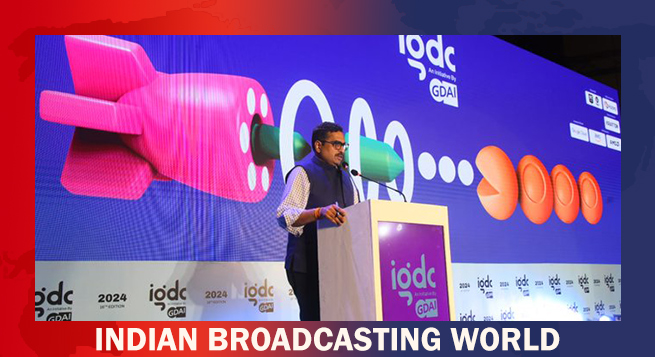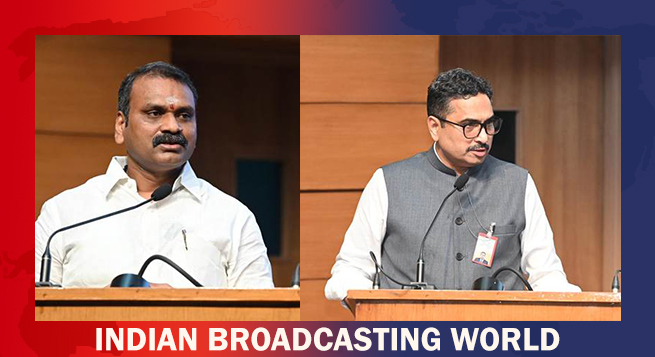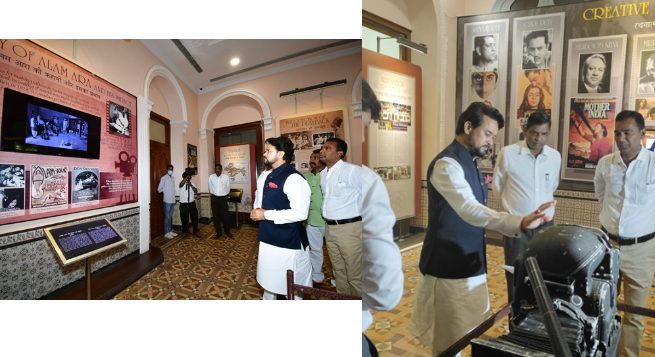Cinema is India’s soft power, which has many benefits, and has helped in creation of an identity of the country abroad, Minister for Information and Broadcasting Anurag Thakur said Thursday.
“Indian cinema is our country’s soft power, which rules the hearts of millions of people across the world,” Thakur said in Mumbai during a visit to the National Museum of Indian Cinema (NMIC).
According to Thakur, Indian cinema has succeeded in creating an identity for the country in the world through entertainment and that the country makes the highest number of films in the world.
The film museum is housed in two buildings in the 19th century heritage structure, the Gulshan Mahal. The New Museum Building is custom built.
After taking a visual tour of the Museum, the Minister remarked, “National Museum of Indian Cinema is a must-visit for those interested in films, especially Indian films; your visit to Mumbai will be incomplete if you don’t visit NMIC when you are in Mumbai.”
Thakur encouraged film buffs and enthusiasts across the country to visit the NMIC to know about the history of Indian cinema and its evolution.
“Spend some time here in NMIC and the Museum will take you back 100 years, when cinema was made without any modern day technology or equipment,” he said.
“Today we talk about Animation, Visual Effects, Graphics and Gaming, technology, but here we will get to see how films were made in those days in the absence of these and what progress has been made until today,” he added, remarking technology has brought ease to human life and to filmmaking itself.
While displays at Gulshan Mahal heritage building, spread over eight different halls of various sizes, trace the history of Indian cinema from the silent era to the new wave, the New Museum Building houses mostly interactive displays.
Film properties, vintage equipment, posters, copies of important films, promotional leaflets, sound tracks, trailers, transparencies, old cinema magazines, statistics covering film making and distribution are displayed in a systematic manner depicting the history of Indian cinema in a chronological order.
As is customary, the Minister also planted a sapling at the premises of the NMIC, apart from holding a review meeting with the officials of Films Division, NMIC, Central Board of Film Certification and NFDC.
 Kevin Vaz, Kiran Mani, Sanjog Gupta to head 3 verticals of JioStar
Kevin Vaz, Kiran Mani, Sanjog Gupta to head 3 verticals of JioStar  Govt & industry to prime gaming space for global dominance: MIB Secy Jaju
Govt & industry to prime gaming space for global dominance: MIB Secy Jaju  Netflix ad-supported tier touches 70mn MAUs globally
Netflix ad-supported tier touches 70mn MAUs globally  Minister Murugan likens IFFI to Cannes fest; ‘Better Man’ opening film
Minister Murugan likens IFFI to Cannes fest; ‘Better Man’ opening film  Release date of Pratik Gandhi, Divyenndu-starrer ‘Agni’ announced
Release date of Pratik Gandhi, Divyenndu-starrer ‘Agni’ announced  Snapchat introduces enhanced teen safety features
Snapchat introduces enhanced teen safety features  Sony BBC Earth unveils anthology ‘Earth’s Handpicked Tales’
Sony BBC Earth unveils anthology ‘Earth’s Handpicked Tales’  Prime Video to premiere ‘Yudhra’
Prime Video to premiere ‘Yudhra’  Tata Play Binge announces family-friendly movie lineup
Tata Play Binge announces family-friendly movie lineup 








